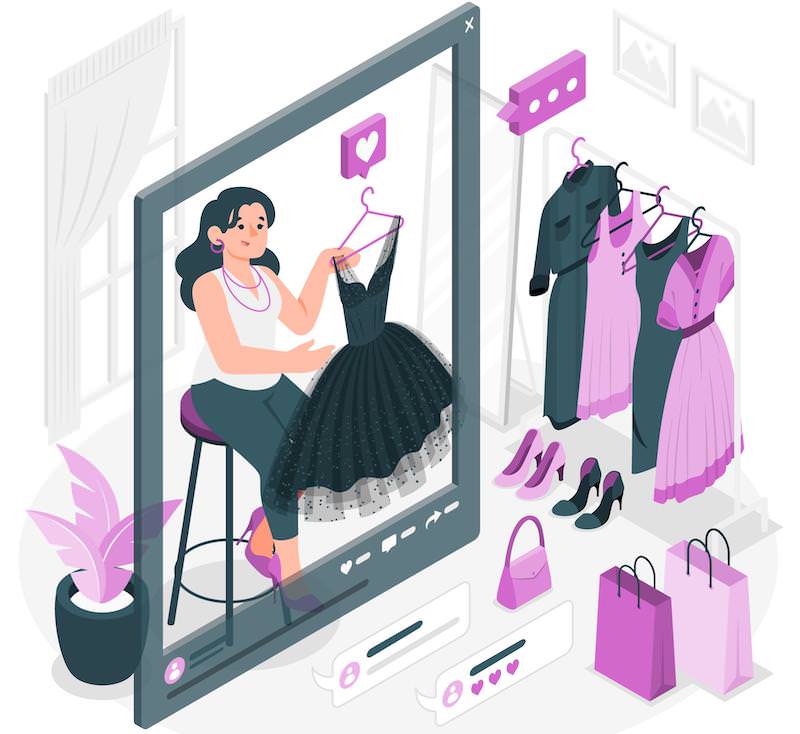Top Marketing Trends to Embrace in 2022
The digital marketing landscape is very dynamic and is known to have been evolving rapidly. The COVID-19 restrictions and new privacy regulations made brands and advertisers reevaluate some of their traditional strategies and channels for the best ad placements.
So in the face of so much uncertainty, what is there to look forward to in 2022?
6 Instagram Marketing Hacks to Grow Your Business
Many businesses find it challenging to keep up with fast-changing algorithms on the popular social media site, Instagram.... Read more
Influencer marketing gets more inclusive and data-driven
Business Wire revealed that consumers now trust influencers more than brands: social distancing forced social media users to engage with influencers to a larger extent than before pandemic restrictions were enforced.
Specifically, more than half of Generation Zers and millennials consider the opinions of social media influencers while making a purchasing decision of some sort. That makes influencer marketing extremely relevant to target this demographic segment.
There’s no surprise that most influencers view themselves as entrepreneurs nowadays. A so-called “creator economy” has emerged, featuring more than 50 million independent content makers and it has reached the $1.3 billion mark in investment in 2021.
With that being said, there’s a clear indication that influencer marketing gets more professional: as more brand ambassadors view it as an actual job, they become more selective and cautious about the products they endorse.

The majority of influencers are driven by inclusivity nowadays. Consumers keep a close eye on opinion leaders and brands to see whether they embody diverse and inclusive cultures, according to Forbes.
Marketing campaigns such as #ShareTheMicNow that contain inclusive messages spark lots of interest and gain traction. Businesses that expect successful collaboration with influencers should absolutely develop their inclusive brands.
Influencer marketing on social media gets matured as an effective advertising channel to target a specific demographic. Finding the right influencer and measuring the ROI can still be somewhat troublesome, so a data-driven approach can be introduced in the years to come.
Mobile marketing will see the rise of social shopping
One would expect to see a slight decline in mobile usage due to the pandemic outbreak: after all, people have various devices at their disposal at home. However, recent statistics proved that’s not necessarily the case – 70% of surveyed users stated that they used mobile devices more than previously.
The expectations of a seamless mobile commerce experience are higher than ever before. The frictionless and touch-less shopping experience on social media is expected to be a shift point soon.
One possible development of this trend could be the rise of BNPL apps like Klarna. At the same time, brands like Walmart and Kroger have introduced their BOPIS apps, furthermore Kroger immediately saw a 92% increase in sales.
The appearance of 5G opens up additional possibilities as far as mobile marketing is concerned. For starters, live commerce is gaining momentum, with China leading the way here. Alibaba’s Taobao Live made an astonishing $7.5 billion in total transaction value in just 30 minutes during Singles’ Day in 2020.

According to TechCrunch, nearly 37% of people in China made purchases during live streams, and the industry is projected to generate $60 billion in 2021. The combination of an instant shopping experience with the audience reaction via a chat function, results in better audience engagement.
There has been a valid point made with social shopping, and the continuation of this trend is very likely. As Walmart and Facebook hosted their live streaming events this year, it would be safe to assume that Western companies will attempt to keep up with their Chinese counterparts in future.
Connected TV (CTV) advertising will dominate traditional TV
Connected TV viewing figures exceeded pre-COVID levels amid doubts. Despite strong streaming and Over-The-Top (OTT) viewing preferences being shaped over the last ten years, people have started taking advantage of CTVs as they spend more time at home due to the COVID restrictions.
The CTV industry is far from being homogeneous, though: Roku tops the list, followed by Amazon, Samsung, Apple, and Vizio. With such network distribution, Roku becomes the obvious choice for most programmatic ads (49%), with Amazon not far behind (9%).
One possible reason why viewers show interest in CTVs is the availability of many emerging entertainment and streaming services. Launched in 2019, Disney+ alone hit 54 million subscribers worldwide in less than half of the year. Does that seem like a lot?

Well, it took Netflix several years to achieve similar results. Given that Disney exceeded even the most optimistic forecasts, the company started producing 57 new shows this year.
As 15% of US viewers canceled their cable subscriptions last year (this number is predicted to double in 2021), CTV is on course to get even more significant audience exposure. Video streaming undoubtedly leads the way, but gaming shows vast potential as it counts for nearly 20% of all apps present on Amazon Fire TV and Apple TV.
Connected TV advertising is proving to be more effective than traditional TV advertising as CTV viewers are 42% more likely to buy advertised products as a result of CTV ads.
The very fact that nearly 15% of US viewers canceled their cable subscriptions last year and twice as many are predicted to do so in 2021 clearly illustrates the overall market potential.
Facebook is still the king. Snapchat to see a breakthrough?
According to Sprout, Facebook, Instagram, and YouTube are the top three media platforms where consumers prefer to stay in touch with brands. But will they still be relevant as TikTok is growing faster than any other social media network before?
Facebook still remains by far the largest social media network on the planet. Despite a steady organic decline over the years, the network still has a relatively low $7.19 cost per millele (CPM), compared to its counterparts.
Facebook will continue to hold a special place in every marketer’s toolkit, although the iOS 14 update will likely force marketers to consider allocating their advertising budgets elsewhere.

Snapchat shows some indications of somewhat lopsided growth: the amount of Snapchat users in the US alone exceeds the number of UK, French, Indian, and Mexican users combined.
The average Snapchat user is 15 – 25 years old, and it has recently made a move to reinforce itself with Generation Z users, adding AR features and Snap games to the platform. It is arguably the first time Snapchat is expected to bring fierce competition to Instagram in 2022.
Although Twitch is generally regarded as a streaming platform, it shares some social media features such as a streaming chat. While live video is among the most valuable content formats, Twitch, which was initially popular among the e-sport-oriented audience, has now almost any kind of content to offer 44 million Generation Z users, including music, lifestyle, and even cooking.
Product placement will become programmatic
According to the e-sport-oriented audience, has now almost any kind of content to offer Bloomberg, product placements on video streaming will top $23 billion in 2021. What makes product placement an effective advertising strategy? Unlike typical ads, they can’t be skipped or muted; they are indistinguishable from the original content.
Numerous studies confirmed that product placement improves brand awareness and creates a positive attitude towards the products advertised. However, product placements can drive negative connotations if made too obvious – subtlety is the key here.
It’s been confirmed that a predisposition towards a certain product matters a lot, particularly when viewers lack general information. Product placement needs to be measurable so marketers can accurately predict ROI.
The biggest shift possible around the corner is the introduction of a programmatic approach to product placements on CTVs and OTT devices.
Emerging advertising channels – what else will be there in 2022?
The video-gaming market consists of the mobile, computing, and console segments with projected revenue of $4.2 million worldwide in 2021. Despite the evident market potential, publishers look cautiously when integrating ads into games.
According to Forbes, failing to provide an immersive advertising experience can disrupt the gaming process, potentially leading to a risk of damage to high-value gaming IPs.
In addition, virtual reality (VR) technology is predicted to grow at a compound annual growth rate (CAGR) of 32.75% between 2021-2026 while AR. The gaming and entertainment industry as such seems like a natural fit for VR; the retail sector will likely be among the early adopters of AR, with 70% of customers indicating the need for a “try it before you buy it” experience. AR and VR have little advertising capabilities to offer as of now, but there will likely be a primetime of such tools.

Finally, the audio advertising market has been around since the advent of radio in the early 20th century. In 2021, this market is mainly limited to music streaming and podcasts, with a projected market volume of $3,177 million.
Recently, Spotify launched the first-ever B2B audio campaign that proved to be more immersive and engaging than traditional radio and TV. Audio advertising shows clear signs of maturity and is a solid alternative to radio ads.
To wrap up
In 2022, advertising will be driven by inclusivity and better decision-making with some opportunities to target millennial and Gen Z audiences.
At the same time, customers will demand an even better immersive shopping experience while marketers will turn their gaze even more towards programmatic media buying. Social media will still be dominated by Facebook but Snapchat will have something extra to offer.